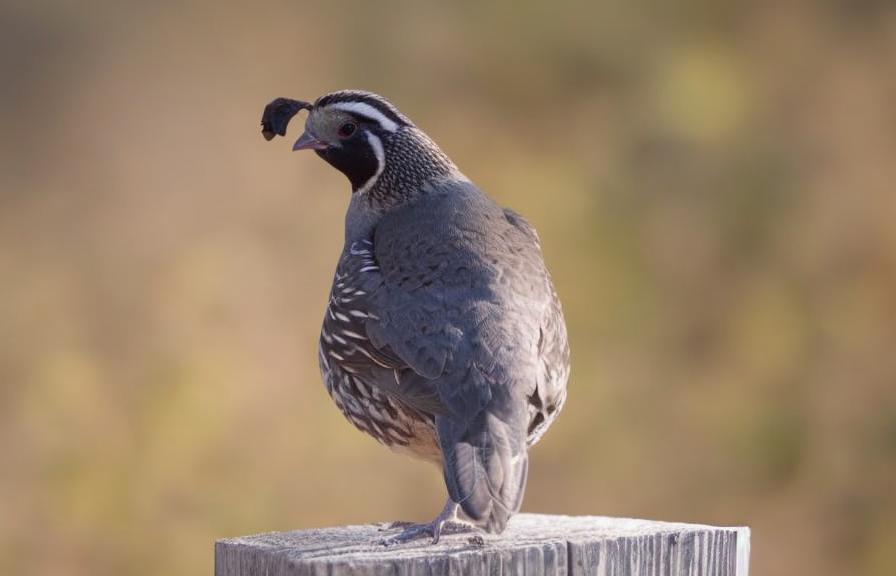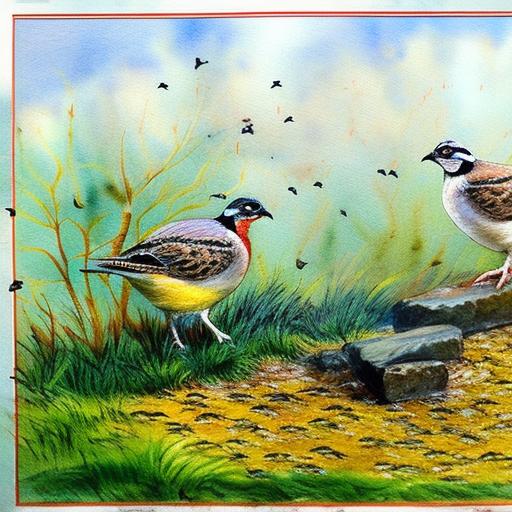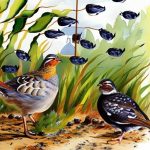Line breeding is a breeding strategy that involves mating closely related individuals within the same family line. The goal of line breeding is to concentrate the genes of a particular ancestor or ancestors in the resulting offspring. This can be done to fix desirable traits within a population, such as size, color, temperament, or performance abilities. Line breeding is often used in the development of purebred animals, such as dogs, horses, and livestock, to maintain and improve specific breed characteristics.
Line breeding can be a valuable tool for breeders looking to produce animals with consistent traits and characteristics. By selectively breeding closely related individuals, breeders can increase the likelihood of passing on desirable genes to future generations. However, it is important for breeders to carefully consider the potential risks and challenges associated with line breeding, as it can also lead to an increase in genetic disorders and health issues if not managed properly.
Key Takeaways
- Line breeding involves breeding closely related individuals within a family line to concentrate desirable traits and characteristics.
- When selecting breeding stock, it is important to consider the health, temperament, and genetic diversity of the individuals to avoid negative effects of inbreeding.
- Maintaining genetic diversity is crucial in line breeding programs to prevent the accumulation of harmful genetic mutations and to ensure the overall health and vigor of the offspring.
- Monitoring inbreeding levels through pedigree analysis and genetic testing can help breeders make informed decisions to minimize the risks of inbreeding depression.
- Managing line breeding programs requires careful planning, record-keeping, and genetic testing to maintain the desired traits and minimize the negative effects of inbreeding.
Selecting Breeding Stock
When selecting breeding stock for a line breeding program, it is important for breeders to carefully evaluate the genetic background and health of the individuals being considered for mating. It is essential to choose animals that possess the desired traits and characteristics that the breeder wishes to perpetuate within the population. Additionally, breeders should assess the genetic diversity of the potential breeding stock to ensure that they are not too closely related, which can lead to an increase in inbreeding and associated health problems.
Breeders should also consider the overall health and conformation of the animals being considered for breeding. It is important to select individuals that are free from genetic disorders and have good overall health to minimize the risk of passing on hereditary health issues to future generations. Additionally, evaluating the temperament and performance abilities of potential breeding stock can help ensure that the resulting offspring will possess the desired traits and characteristics. By carefully selecting breeding stock, breeders can increase the likelihood of producing healthy, high-quality offspring with consistent traits.
Maintaining Genetic Diversity
While line breeding can be an effective tool for fixing desirable traits within a population, it is important for breeders to also prioritize maintaining genetic diversity within their breeding programs. Genetic diversity is essential for the long-term health and viability of a population, as it helps to reduce the risk of inbreeding and associated health issues. To maintain genetic diversity, breeders should periodically introduce new genetic material into their breeding programs by outcrossing with unrelated individuals from the same breed or closely related breeds.
By introducing new genetic material into their breeding programs, breeders can help prevent the negative effects of inbreeding, such as an increase in genetic disorders and reduced overall fitness. Additionally, maintaining genetic diversity can help ensure that populations remain adaptable to changing environmental conditions and evolving selection pressures. By carefully managing genetic diversity within their breeding programs, breeders can help ensure the long-term health and viability of their populations.
Monitoring Inbreeding
Inbreeding is a natural consequence of line breeding, as it involves mating closely related individuals within the same family line. However, excessive inbreeding can lead to an increase in genetic disorders and health issues within a population. To prevent the negative effects of inbreeding, breeders should monitor the level of inbreeding within their populations and take steps to manage it effectively.
One way to monitor inbreeding is by calculating the inbreeding coefficient of individuals within a population. The inbreeding coefficient is a measure of how closely related an individual is to itself, with higher coefficients indicating a greater degree of inbreeding. By calculating the inbreeding coefficient of potential breeding stock, breeders can make informed decisions about which individuals to mate in order to minimize the risk of excessive inbreeding.
Additionally, breeders can use pedigree analysis to identify potential sources of inbreeding within their populations. By examining the pedigrees of their animals, breeders can identify common ancestors and assess the level of relatedness between individuals. This information can help breeders make informed decisions about which individuals to mate in order to minimize the risk of excessive inbreeding and associated health issues.
Managing Line Breeding Programs
Managing a line breeding program requires careful planning and consideration of genetic diversity and inbreeding levels within a population. Breeders should develop a breeding plan that takes into account the desired traits and characteristics they wish to perpetuate within their populations, while also prioritizing genetic diversity and minimizing the risk of excessive inbreeding.
One way to manage a line breeding program is by implementing a structured mating system that carefully selects which individuals are mated in order to maintain genetic diversity and minimize the risk of inbreeding. This may involve outcrossing with unrelated individuals from the same breed or closely related breeds to introduce new genetic material into the population. Additionally, breeders may choose to selectively mate individuals with lower levels of relatedness in order to minimize the risk of excessive inbreeding.
It is also important for breeders to regularly evaluate the health and conformation of their breeding stock to ensure that they are producing healthy, high-quality offspring with consistent traits. By carefully managing their line breeding programs, breeders can help ensure the long-term health and viability of their populations while perpetuating desirable traits and characteristics.
Potential Risks and Challenges

While line breeding can be an effective tool for fixing desirable traits within a population, it is not without its risks and challenges. One of the primary risks associated with line breeding is an increase in genetic disorders and health issues due to excessive inbreeding. When closely related individuals are mated over multiple generations, there is an increased likelihood of passing on deleterious genes that can lead to health problems within a population.
Additionally, line breeding can lead to a reduction in genetic diversity within a population if not managed properly. This reduction in genetic diversity can make populations more susceptible to environmental changes and evolving selection pressures, ultimately reducing their long-term viability. It is important for breeders to carefully manage genetic diversity within their line breeding programs to prevent these negative effects.
Another challenge associated with line breeding is the potential for decreased fertility and reproductive success within a population. Excessive inbreeding can lead to reduced fertility and increased rates of embryonic loss, ultimately impacting the overall reproductive success of a population. By carefully managing inbreeding levels and genetic diversity within their line breeding programs, breeders can help mitigate these risks and challenges.
Benefits of Line Breeding
Despite the potential risks and challenges associated with line breeding, there are also many benefits to this breeding strategy when managed effectively. Line breeding can be a valuable tool for fixing desirable traits within a population, such as size, color, temperament, or performance abilities. By selectively mating closely related individuals, breeders can increase the likelihood of passing on desirable genes to future generations, ultimately producing animals with consistent traits and characteristics.
Additionally, line breeding can help maintain breed standards and preserve unique breed characteristics over time. By concentrating the genes of specific ancestors within a population, breeders can perpetuate desirable traits that are characteristic of a particular breed. This can help preserve the identity and heritage of a breed while maintaining its unique qualities.
Furthermore, line breeding can be an effective tool for producing animals with predictable traits and characteristics. By carefully selecting breeding stock and managing genetic diversity within their populations, breeders can produce offspring with consistent traits that meet specific standards and expectations. This predictability can be valuable for breeders looking to produce animals with certain performance abilities or conformational traits.
In conclusion, line breeding is a valuable tool for breeders looking to fix desirable traits within a population while maintaining breed standards and preserving unique characteristics. By carefully selecting breeding stock, managing genetic diversity, monitoring inbreeding levels, and implementing structured mating systems, breeders can effectively manage their line breeding programs to produce healthy, high-quality offspring with consistent traits. While there are potential risks and challenges associated with line breeding, when managed effectively, this breeding strategy can offer many benefits for breeders looking to perpetuate specific traits within their populations.
If you’re interested in line breeding quail, you may also want to check out Poultry Wizard’s article on “How Big Does a Coop Need to Be for a Chicken?” Understanding the space requirements for chickens can provide valuable insights into creating optimal breeding environments for quail. You can find the article here.
FAQs
What is line breeding in quail?
Line breeding in quail is a selective breeding method where closely related individuals within a quail line are bred together to maintain or enhance specific desirable traits.
What are the benefits of line breeding in quail?
Line breeding in quail can help to fix desirable traits within a quail line, such as improved egg production, meat quality, or disease resistance. It can also help to maintain genetic purity within a specific quail line.
What are the potential drawbacks of line breeding in quail?
Line breeding in quail can lead to an increase in the expression of undesirable traits or genetic disorders if not carefully managed. It can also reduce genetic diversity within the quail line, which may impact overall health and resilience.
How can line breeding in quail be managed to minimize negative effects?
To minimize negative effects of line breeding in quail, breeders should carefully select breeding stock, monitor for any signs of inbreeding depression, and periodically introduce new genetic material from outside sources to maintain genetic diversity within the quail line.
What are some common traits that breeders may focus on when line breeding quail?
Common traits that breeders may focus on when line breeding quail include egg production, meat quality, size, coloration, and temperament. These traits can be selectively bred for to enhance the overall quality of the quail line.
Meet Walter, the feathered-friend fanatic of Florida! Nestled in the sunshine state, Walter struts through life with his feathered companions, clucking his way to happiness. With a coop that’s fancier than a five-star hotel, he’s the Don Juan of the chicken world. When he’s not teaching his hens to do the cha-cha, you’ll find him in a heated debate with his prized rooster, Sir Clucks-a-Lot. Walter’s poultry passion is no yolk; he’s the sunny-side-up guy you never knew you needed in your flock of friends!







